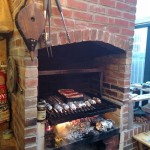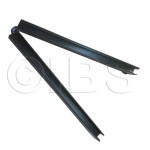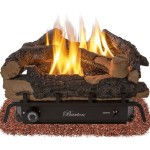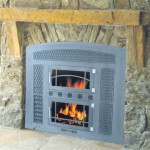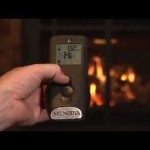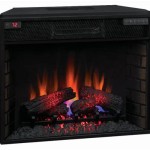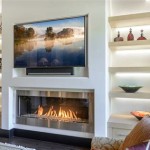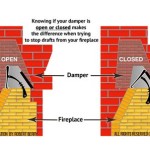How Often Should A Wood Burning Fireplace Be Cleaned?
Maintaining a clean wood-burning fireplace is crucial for both safety and efficiency. A buildup of creosote, a flammable byproduct of wood combustion, poses a significant fire hazard. Regular cleaning also ensures the fireplace operates at peak performance, providing optimal heat output and reducing wood consumption.
Creosote Buildup: The Primary Concern
Creosote forms as a result of incomplete wood combustion. It appears as a sticky, tar-like substance that coats the inside of the chimney and fireplace. Over time, this buildup can restrict airflow, leading to less efficient burning and increased smoke production. More importantly, creosote is highly flammable and can ignite, causing a chimney fire. The frequency of cleaning depends largely on the type of creosote present.
Types of Creosote
Three primary types of creosote can accumulate in a chimney: third-degree, second-degree, and first-degree. Third-degree creosote is a hard, glazed substance that is difficult to remove and poses the most significant fire hazard. Second-degree creosote is a flaky, black substance that is easier to remove than third-degree but still requires professional cleaning. First-degree creosote is a sooty, powdery substance that can often be removed with a chimney brush.
Cleaning Frequency Guidelines
General guidelines recommend having a chimney inspection and cleaning performed annually. However, the actual frequency depends on several factors, including wood type, burning habits, and fireplace design. Burning seasoned hardwood creates less creosote than burning softwood or unseasoned wood. Frequent fires, particularly those that smolder, also contribute to increased creosote buildup. Fireplaces with poor draft or design flaws can also experience accelerated creosote formation. Therefore, it's essential to monitor creosote buildup and adjust cleaning frequency accordingly.
Signs Your Fireplace Needs Cleaning
Several indicators suggest it’s time for a professional chimney cleaning. A telltale sign is the presence of a significant creosote buildup visible in the chimney or firebox. Difficulty starting or maintaining a fire can also indicate restricted airflow due to creosote. A strong, persistent odor of smoke, even when the fire is burning properly, can signify a dirty chimney. Additionally, black, flaky debris falling from the chimney opening is a clear indication of creosote buildup.
Professional vs. DIY Cleaning
While some homeowners opt for DIY chimney cleaning, hiring a certified chimney sweep is generally recommended. Professional chimney sweeps have the expertise, tools, and equipment necessary to thoroughly clean the chimney and inspect for potential hazards. They can also identify and address any structural issues or damage that may be present. DIY cleaning methods can be ineffective at removing hardened creosote and may even damage the chimney lining if done improperly.
Choosing a Certified Chimney Sweep
When selecting a chimney sweep, look for certification from a reputable organization such as the Chimney Safety Institute of America (CSIA). CSIA-certified chimney sweeps have undergone rigorous training and testing and adhere to industry best practices. It’s also advisable to obtain multiple quotes and check references before hiring a chimney sweep.
Preventing Creosote Buildup
Several measures can help minimize creosote buildup and reduce the frequency of professional cleanings. Burning only seasoned hardwood is crucial. Avoid burning softwoods like pine or fir, as they contain high levels of resin, which contributes significantly to creosote formation. Ensure adequate airflow by opening the damper fully before starting a fire and keeping it open until the embers have completely died down. Burning hot, intense fires rather than smoldering fires helps to maximize combustion and reduce creosote production. Having the chimney inspected annually by a professional can identify and address potential issues early on, preventing more significant problems from developing.
Importance of Regular Inspections
Even with diligent cleaning, annual chimney inspections are essential. A professional chimney sweep can identify potential hazards, such as cracks in the chimney lining, blockages, or other structural issues. These inspections can help prevent chimney fires and ensure the safe and efficient operation of the fireplace.
Wood Burning Practices
Proper wood burning practices play a vital role in minimizing creosote buildup. Avoid burning trash, plastics, or treated lumber in the fireplace, as these materials can release harmful chemicals and contribute to creosote formation. Use kindling and small pieces of wood to start the fire, gradually adding larger logs as the fire establishes itself. Don't overload the firebox, as this can restrict airflow and lead to incomplete combustion. Keep the area around the fireplace clear of flammable materials.

How Often Should Wood Burning Fireplaces Be Inspected And Cleaned Mendham Fire Department

How To Effectively Clean A Wood Burning Fireplace Appliances Connection

How Often Should A Fireplace Be Serviced Bassemiers

How To Clean Your Chimney And Fireplace Often Do It

How To Clean Maintain Your Wood Burning Stove Direct Stoves

Top Tips On Cleaning Wood Burners Aga Living

How Often Should I Have My Fireplace Cleaned Sag Harbor

Chimney Cleaning When To Clean A Flue Family Handyman

How Frequently Should I Clean My Chimney And Wood Burning Appliance We Love Fire

How To Clean A Wood Burning Stove For The Best Performance Safety

